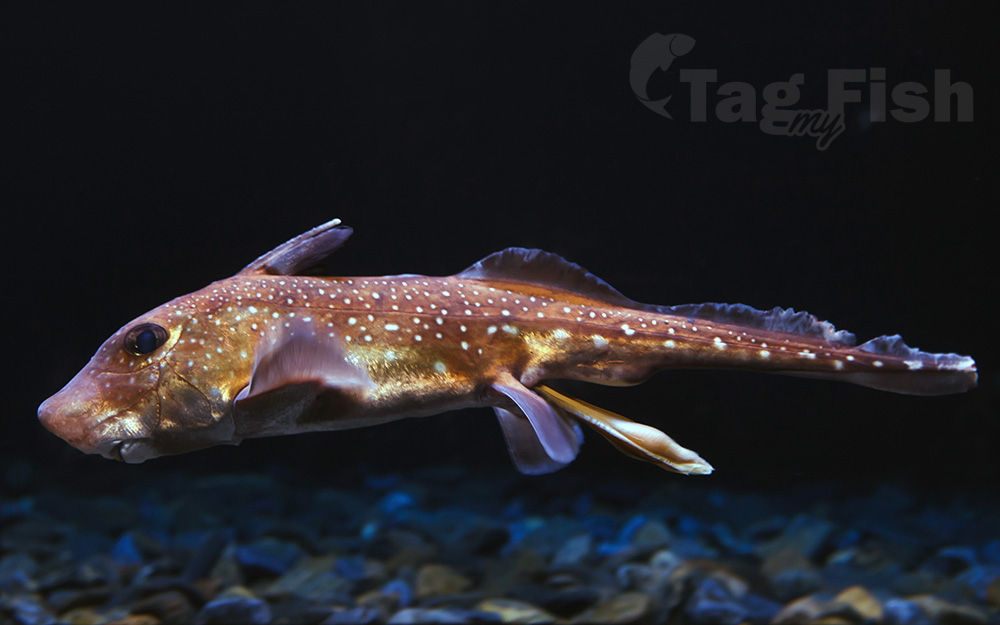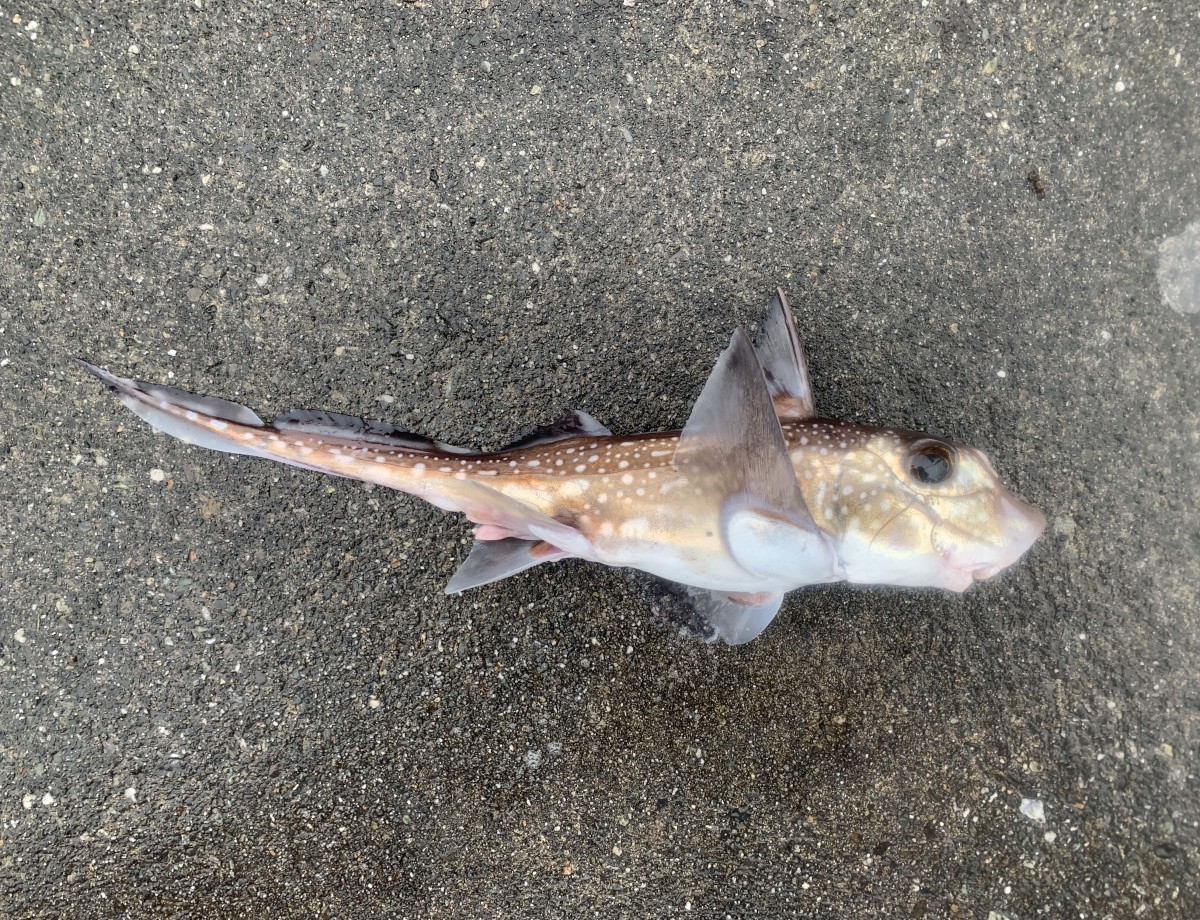Spotted ratfish
(Hydrolagus colliei)

Classification
General data
The spotted ratfish (Hydrolagus colliei) is a chimaera found in the north-eastern Pacific Ocean. Often seen by divers at night in the Pacific Northwest, this cartilaginous fish gets its characteristic name from a pointed rat-like tail. The ratfish lays leathery egg cases on the bottom of muddy or sandy areas, which are often mistaken by divers as something inanimate. While mainly a deep-water species, it occurs at shallower depths in the northern part of its range.
Description
The spotted ratfish has a very distinct appearance compared to unrelated fish species. The female is up to 97 cm (38 in) long, much bigger than the male. These fish have a smooth and scaleless skin that is a silvery-bronze color, often with sparkling shades of gold, blue, and green. The speckled white spots along their backs contribute to their name. Dark edges outline both the caudal and dorsal fins, whereas the pectoral fins have a transparent outline. Their pectoral fins are large and triangular, and extend straight out from the sides of their bodies like airplane wings.
They have a venomous spine located at the leading edge of their dorsal fin, which is used in defense. It does not present a serious danger to humans, but can cause painful wounds and has been known to kill harbor seals that ate spotted ratfish (caused by the spine penetrating vital tissue in the stomach or esophagus after the ratfish was swallowed).
The tail of the ratfish constitutes almost half of its overall length and closely resembles a pointed, rat-like tail. The body of this fish is supported by cartilage rather than bone. It has a duckbill-shaped snout and a rabbit-like face.
The mouth is small and contains one pair of forward-directed, incisor-shaped teeth in the bottom jaw and two pairs in the top jaw. Unlike sharks, which have sharp teeth that are easily replaceable, spotted ratfish teeth are plate-shaped, mineralized, and permanent, which assist them in grinding their prey.
Like many bony fishes, but unlike its sister group, the Elasmobranchii, the upper jaw of the chimaera is fused with the skull. Although their jaws are soft and mouths are relatively small, they have the largest biting force and jaw leverage found within the Holocephali, which supports their ability to consume large prey. One of their most mesmerizing features is their large, emerald green eyes, which are able to reflect light, similar to the eyes of a cat.
Distribution and habitat
The spotted ratfish can be found in the northeastern Pacific Ocean, ranging from Alaska to Baja California, with an isolated population in the Gulf of California. They are abundant in much of their range. They are found most commonly of the Pacific Northwest.
The range of depths in which this fish is found extends from 0 to 913 m (0 to 2,995 ft) below sea level, but it is most common between 50 and 400 m (160 and 1,310 ft).
Spotted ratfish typically live closer to the shore in the northern part of their range than in the southern, but it is also found as shallow as 30 m (98 ft) off California. Spotted ratfish tend to move closer to shallow water during the spring and autumn, then to deeper water in summer and winter. For most of the year, they prefer temperatures between 7.2 and 8.9 °C (45 and 48 °F), but seasonally they do move into slightly warmer water.
They can most commonly be found living near the seafloor in sandy, muddy, or rocky reef environments. Unlike most of its relatives, which are entirely restricted to deep waters, the spotted ratfish has been held in public aquaria. It has also been bred in such aquaria, where two of the main issues are the requirements of low light and low temperature (generally kept at 8–12 °C or 46–54 °F).












